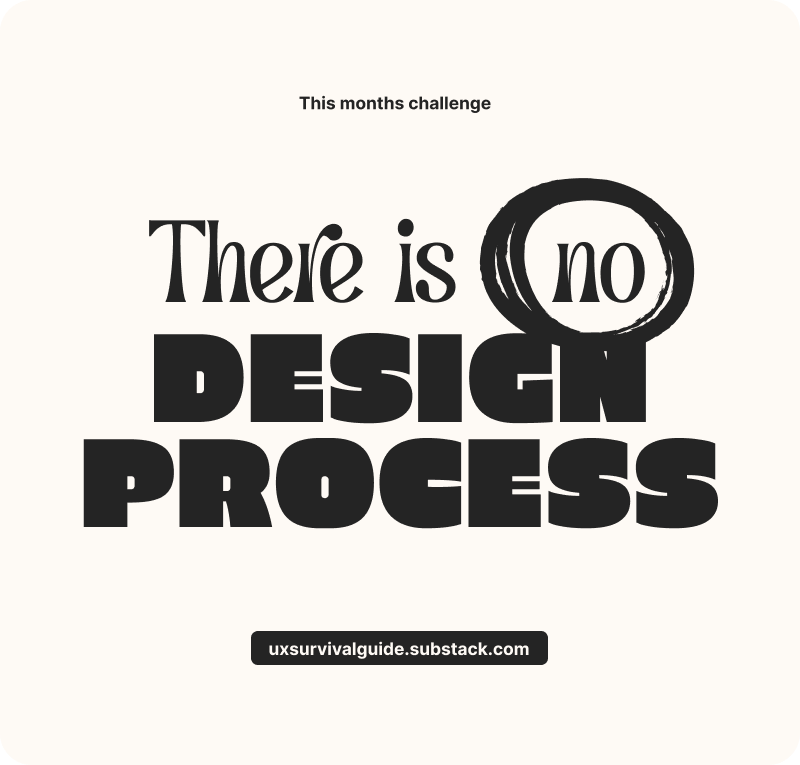There is no "design process"
Why a flexible, strategic approach matters—and what happens when we default to a one-size-fits-all process.
Hey, Miranda here 👋
Whether you’re jumping straight into UI when you should be starting with discovery research or you’re doing a full process parade when you could be doing rapid iteration.
Let’s talk about why a flexible, strategic approach matters—and what happens when we default to a one-size-fits-all process.
The Problem With Process for Process' Sake
Most design teams have some kind of process—which is good! But the problem comes when that process becomes the default for every project, regardless of scope or impact.
The result?
Timelines bloat with unnecessary steps
Designers burn time (and stakeholder patience)
Design loses credibility as being "slow" or "too precious"
Instead, the best designers know how to match the approach to the project.
Let’s break this down by looking at a few common project types and how your process should flex accordingly.
Keep reading with a 7-day free trial
Subscribe to UX Survival-list to keep reading this post and get 7 days of free access to the full post archives.


